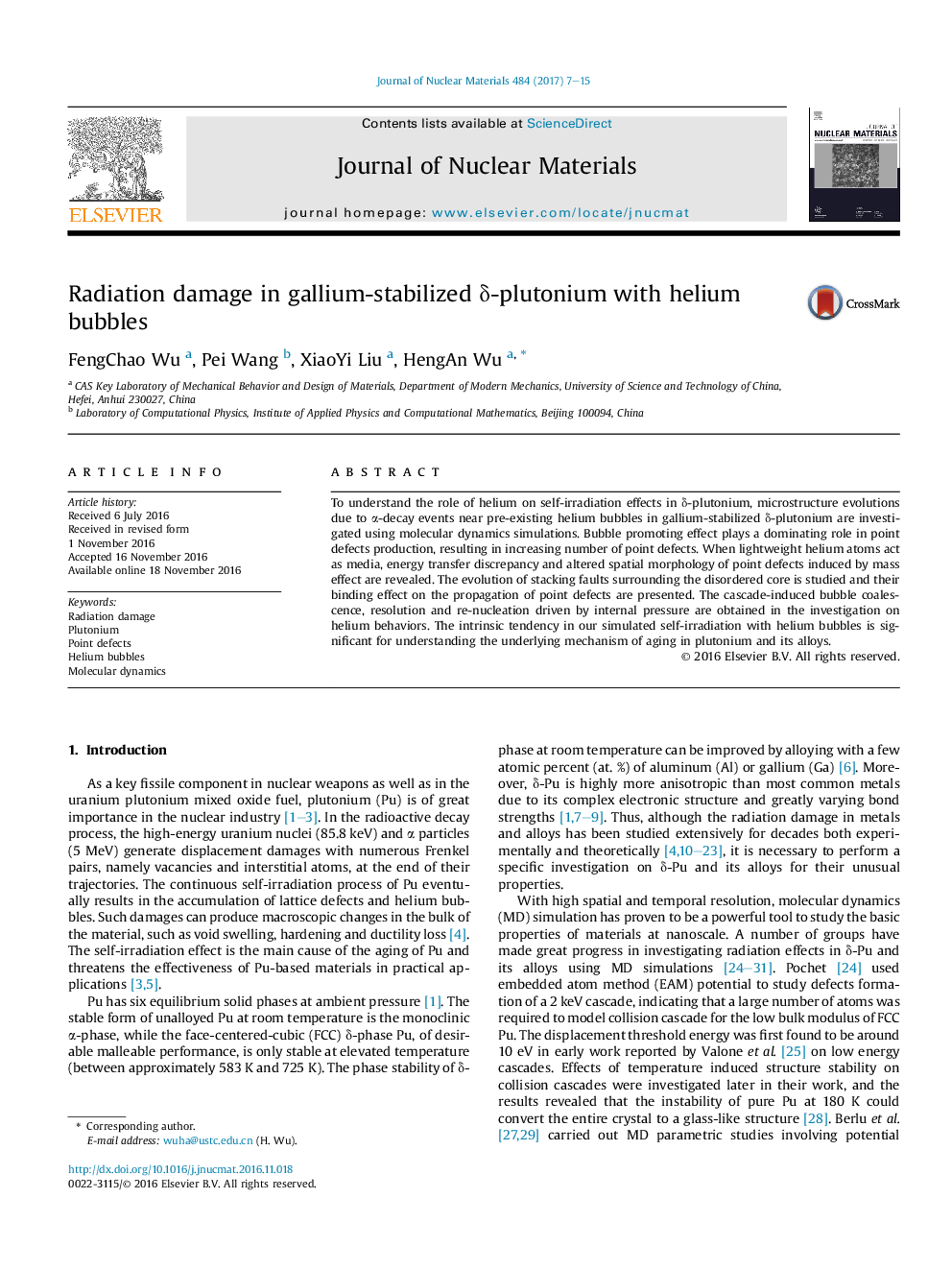| Article ID | Journal | Published Year | Pages | File Type |
|---|---|---|---|---|
| 5454424 | Journal of Nuclear Materials | 2017 | 9 Pages |
Abstract
To understand the role of helium on self-irradiation effects in δ-plutonium, microstructure evolutions due to α-decay events near pre-existing helium bubbles in gallium-stabilized δ-plutonium are investigated using molecular dynamics simulations. Bubble promoting effect plays a dominating role in point defects production, resulting in increasing number of point defects. When lightweight helium atoms act as media, energy transfer discrepancy and altered spatial morphology of point defects induced by mass effect are revealed. The evolution of stacking faults surrounding the disordered core is studied and their binding effect on the propagation of point defects are presented. The cascade-induced bubble coalescence, resolution and re-nucleation driven by internal pressure are obtained in the investigation on helium behaviors. The intrinsic tendency in our simulated self-irradiation with helium bubbles is significant for understanding the underlying mechanism of aging in plutonium and its alloys.
Related Topics
Physical Sciences and Engineering
Energy
Nuclear Energy and Engineering
Authors
FengChao Wu, Pei Wang, XiaoYi Liu, HengAn Wu,
